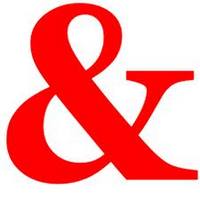free pages from our English Language software program
Grammar – definition
![]() The term ‘grammar’ refers to the structure of language.
The term ‘grammar’ refers to the structure of language.
![]() This can be applied to a whole language or to any smaller unit of that language.
This can be applied to a whole language or to any smaller unit of that language.
![]() Grammatical study is often a systematic account of the rules of sentence structure, syntax, and semantics.
Grammatical study is often a systematic account of the rules of sentence structure, syntax, and semantics.
Examples
![]() The study of grammar in any language focuses on:
The study of grammar in any language focuses on:
tense concerning time sequence person reference to people or things syntax how parts relate to each other
![]() A grammatical study of the following brief statement focuses on the same issues:
A grammatical study of the following brief statement focuses on the same issues:
The cats drank the milk
The cats Subject – third person plural drank Verb – past tense the milk Object – third person singular
![]() Notice that the statement follows normal English syntax (word-order)
Notice that the statement follows normal English syntax (word-order)
Subject — Verb — Object
Use
![]() An awareness of grammar or the structure of language can result in more efficient writing and speaking.
An awareness of grammar or the structure of language can result in more efficient writing and speaking.
![]() An understanding of the mechanics or workings of language is far more useful and more easily acquired than memorising technical terms.
An understanding of the mechanics or workings of language is far more useful and more easily acquired than memorising technical terms.
![]() You can understand the mechanics of language by studying utterances and their:
You can understand the mechanics of language by studying utterances and their:
audience — form — function
![]() The study of grammar in any language focuses on:
The study of grammar in any language focuses on:
tense John ran up the stairs
[past tense of the verb]person Joanna approached him
[third person singular]syntax The dog bit the man
[subject – verb – object]
![]() NB! Most people are not conscious of grammatical rules — but they use them quite naturally when speaking.
NB! Most people are not conscious of grammatical rules — but they use them quite naturally when speaking.
![]() It is useful to be able to distinguish between the more grammatical items in a statement and those which have a mainly lexical function.
It is useful to be able to distinguish between the more grammatical items in a statement and those which have a mainly lexical function.
![]() The grammatical items are the working parts of the statement, whilst the lexical items carry content or meaning.
The grammatical items are the working parts of the statement, whilst the lexical items carry content or meaning.
![]() There is no absolute distinction between grammatical and lexical items. However, it is possible to think of a continuum, with lexis at one end and grammar at the other.
There is no absolute distinction between grammatical and lexical items. However, it is possible to think of a continuum, with lexis at one end and grammar at the other.
![]() For instance, the items in in the following statement can be seen as lexical, grammatical, and a combination of both:
For instance, the items in in the following statement can be seen as lexical, grammatical, and a combination of both:
‘Dorothy likes to come to our house every Tuesday and have tea with us.’
lexical Dorothy, house, Tuesday, tea grammatical to, and, with
![]() The terms ‘our’, ‘every’, and ‘have’ are between these two categories because they perform both a lexical and a grammatical function.
The terms ‘our’, ‘every’, and ‘have’ are between these two categories because they perform both a lexical and a grammatical function.
![]() The study of English grammar study has developed over hundreds of years. The objective has generally been to find a set of rules which accurately and comprehensively define, describe, and explain the workings of the language.
The study of English grammar study has developed over hundreds of years. The objective has generally been to find a set of rules which accurately and comprehensively define, describe, and explain the workings of the language.
![]() In the past, grammar study was very prescriptive. Rules were laid down as to how English must be used. Many of these prescriptive rules were based on the rules of the Latin language which historically had strong religious and cultural ties with English.
In the past, grammar study was very prescriptive. Rules were laid down as to how English must be used. Many of these prescriptive rules were based on the rules of the Latin language which historically had strong religious and cultural ties with English.
![]() Latin was regarded as the perfect language and as such was used as a model for English. However, it was a blueprint which didn’t fit, and the struggle to make it fit has left us with such prescriptive rules as ‘Never end a sentence with a preposition’.
Latin was regarded as the perfect language and as such was used as a model for English. However, it was a blueprint which didn’t fit, and the struggle to make it fit has left us with such prescriptive rules as ‘Never end a sentence with a preposition’.
![]() In the past, the study of grammar was thought to be a series of rules and regulations:
In the past, the study of grammar was thought to be a series of rules and regulations:
- Rules for writing good English
- Learning to analyse sentences grammatically
![]() The most significant development this century has been the move towards a descriptive and functional approach to understanding of the workings of English. That is to say, the emphasis currently is on observing how the language is actually operating in practice. Changes are charted and variations noted, with a neutral attitude.
The most significant development this century has been the move towards a descriptive and functional approach to understanding of the workings of English. That is to say, the emphasis currently is on observing how the language is actually operating in practice. Changes are charted and variations noted, with a neutral attitude.
![]() A language is best seen as a living organism which is constantly in the process of evolution. The nature of its changes reflect and affect its users. As Latin has been a dead language for hundreds of years, its imposition on English is at best interesting and at worst ludicrous.
A language is best seen as a living organism which is constantly in the process of evolution. The nature of its changes reflect and affect its users. As Latin has been a dead language for hundreds of years, its imposition on English is at best interesting and at worst ludicrous.
![]() Every language has a basic structure. This is composed of its essential grammatical features, which are its working parts. It also has more superficial features such as its vocabulary, which changes and develops in accordance with cultural and social phenomena.
Every language has a basic structure. This is composed of its essential grammatical features, which are its working parts. It also has more superficial features such as its vocabulary, which changes and develops in accordance with cultural and social phenomena.
![]() A good example of this can be seen in the recently acquired technological terms associated with the advent of the computer. The terms ‘hard disk’, ‘floppy drive’, ‘Web site’, ‘Internet’, ‘mouse’, and ‘downloading’ simply didn’t exist thirty years ago. Indeed, the World Wide Web – for many people the centre of the Internet – was only invented as recently as 1993.
A good example of this can be seen in the recently acquired technological terms associated with the advent of the computer. The terms ‘hard disk’, ‘floppy drive’, ‘Web site’, ‘Internet’, ‘mouse’, and ‘downloading’ simply didn’t exist thirty years ago. Indeed, the World Wide Web – for many people the centre of the Internet – was only invented as recently as 1993.
![]() Noam Chomsky perhaps made the most significant impact on the study of grammar by his Innateness Theory, which is now universally accepted as basically valid.
Noam Chomsky perhaps made the most significant impact on the study of grammar by his Innateness Theory, which is now universally accepted as basically valid.
![]() The Innateness theory of grammar is based on the notion that humans are genetically programmed to acquire language. The Language Acquisition Device (LAD) is a function which equips us for speech, just as other genetic features equip us for walking or breathing.
The Innateness theory of grammar is based on the notion that humans are genetically programmed to acquire language. The Language Acquisition Device (LAD) is a function which equips us for speech, just as other genetic features equip us for walking or breathing.
![]() The prerequisite for language acquisition is what Chomsky calls comprehensible imput – which is hearing people around us use language.
The prerequisite for language acquisition is what Chomsky calls comprehensible imput – which is hearing people around us use language.
![]() Thousands of different languages exist, and the developing child acquires the language of its own culture. The vocabulary and content has to be learnt, but the fundamental grammatical workings are innate.
Thousands of different languages exist, and the developing child acquires the language of its own culture. The vocabulary and content has to be learnt, but the fundamental grammatical workings are innate.
![]() Evidence of this LAD at work can be observed in the so-called mistakes which young children make. These are utterances such as ‘I comed home’ or ‘I wented over there’ or ‘those two sheeps’ and ‘those three mouses’.
Evidence of this LAD at work can be observed in the so-called mistakes which young children make. These are utterances such as ‘I comed home’ or ‘I wented over there’ or ‘those two sheeps’ and ‘those three mouses’.
![]() What is happening here should be celebrated as evidence of the child’s capacity for grammatical analysis. That is, the rule has been learned but over-applied.
What is happening here should be celebrated as evidence of the child’s capacity for grammatical analysis. That is, the rule has been learned but over-applied.
![]() The expression ‘I comed’ is evidence that the child has internalised the rule for forming the past tense, which is – add ‘—ed’.
The expression ‘I comed’ is evidence that the child has internalised the rule for forming the past tense, which is – add ‘—ed’.
![]() ‘Sheeps’ and ‘mouses’ show that the rule for forming a plural has been learnt — add ‘—s’.
‘Sheeps’ and ‘mouses’ show that the rule for forming a plural has been learnt — add ‘—s’.
Self-assessment quiz follows >>>
© Roy Johnson 2003
English Language 3.0 program
Books on language
More on grammar

 Many people have difficulties knowing how to use and in a sentence. That’s possibly because it is such a common word.
Many people have difficulties knowing how to use and in a sentence. That’s possibly because it is such a common word.